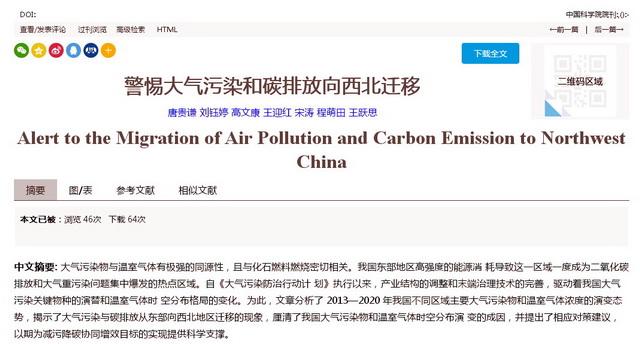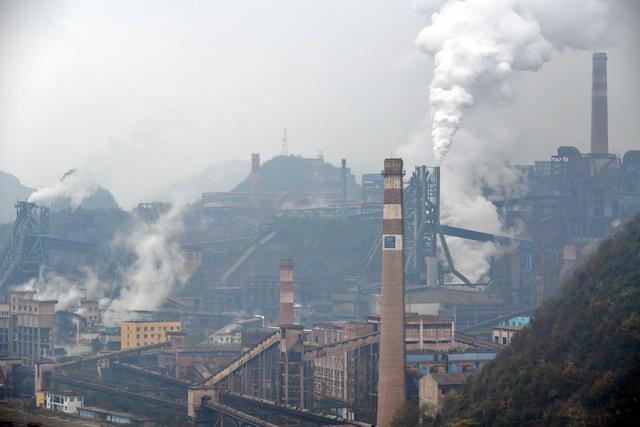

File photo by Zhang Ke
Experts say carbon dioxide and nitrogen dioxide mainly come from fossil fuel burning. The large increase in CARBON dioxide concentrations in the Northwest indicates increased use of fossil fuels in the region, while the low decrease in nitrogen dioxide concentrations suggests that there may be insufficient investment and operation of terminal treatment facilities in the region.
Compared with 2013, coal use in eastern and southwestern China decreased to 2.61 billion tons and 340 million tons in 2019 from 2.71 billion tons and 430 million tons, respectively, the data showed. At the same time, coal use in northwest China increased 40.7 percent from 1.18 billion tons to 1.66 billion tons. Xinjiang, Ningxia, Inner Mongolia, Shanxi and Shaanxi saw the most significant increases in coal use, up 66.9 percent, 60.8 percent, 40.4 percent, 40.1 percent and 24.9 percent, respectively. The increasing use of coal in the Northwest is shaping the region's greenhouse gas trend.
In addition, the output of pig iron, crude steel, steel, coke, sulfuric acid, caustic soda, soda and chemical fertilizer in northwest China also increased significantly, by 22.4%, 31.7%, 23.1%, 12.5%, 24.2%, 42.3%, 43.4% and 25.2% respectively.
It is found that the serious lag of the installation of industrial waste gas treatment facilities in northwest China and the lack of subsequent investment in treatment costs are another important reason for the migration of air pollution to northwest China. Compared with 2013, the number of waste gas terminal treatment facilities in eastern China increased by 109.5% in 2019, while those in southwest and northwest China increased by 75.0% and 64.3% respectively.
Experts suggested that northwest China be encouraged to develop clean energy in light of local conditions, optimize the energy supply and demand structure, and accelerate local consumption of wind and photovoltaic power generation. At the same time, the installation of air pollutant terminal treatment facilities in industries above designated size (especially electric power and non-electric industry) in northwest China should be increased, the capital input in the operation of treatment facilities should be increased, and the supervision of terminal treatment facilities should be strengthened.
Some environmental experts told China Business News on February 15 that the western region should dilute the special policies to attract investment. We will encourage industries to relocate by fostering a sound government, legal and business environment, and make up for weak links in the industrial chain in accordance with industrial linkages and resource endowments. For projects to be undertaken, factors such as energy consumption, water consumption and total discharge of "three wastes" (waste water, exhaust gas and solid waste) should be evaluated.
Media interview on carbon cleaning technology
2022-03-23European Commission approves Carbon Boundary Regulation Mechanism (CBAM)
2022-03-18[News] Carbon technology was invited to attend the carbon Peak carbon neutralization work symposium
2022-03-04[Review of the first year of the National Carbon Trading Market]
2022-03-18"Clean Carbon Technology" was invited to conduct professional training on double carbon for the League of Nations Group
2021-12-23COP26 -- The best time and the last chance!
2021-11-12When we talk about carbon neutrality, what are we talking about?
2021-10-28Support for the
2021-10-19Enabling a zero-carbon future
2021-10-15Carbon removal technology helped wuxi Bureau of Ecology and Environment "tin carbon walk" activities
2022-02-26




 苏公网安备31010702002557号
苏公网安备31010702002557号